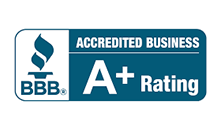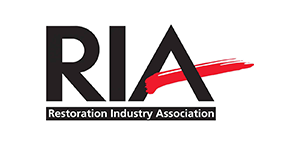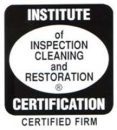If you’ve discovered mold growth in your home, it’s important to consider the potential health risks associated with staying in a house with mold. While some types of mold are relatively harmless, others can release toxins, leading to serious health concerns. It’s crucial to understand the safety concerns of staying with mold and know what steps to take if you suspect a problem. In this section, we will explore the effects of mold exposure and provide expert advice on whether it’s safe to remain in a mold-infested house.
Key Takeaways:
- Mold growth can pose potential health risks and safety concerns, especially in vulnerable populations.
- Identifying mold in your home is the first step in assessing the severity of contamination.
- Professional assistance may be necessary for testing, remediation, and prevention of mold growth.
- It’s important to take appropriate safety measures if staying in a mold-infested house, such as improving ventilation, minimizing exposure, or temporary relocation.
- Prevention is key in ensuring a mold-free living environment by controlling humidity, improving ventilation, and repairing leaks.
Understanding Mold Growth and its Health Effects
Mold growth is a common problem in our homes. It thrives in moist and damp environments and can grow on any surface that provides it with a suitable environment. Mold is a type of fungus, and though some types are harmless, the growth of certain species can have adverse health effects.
The health effects of mold exposure can range from mild to severe, depending on the individual’s sensitivity and the duration of their exposure to mold. For many individuals, exposure to mold can lead to respiratory issues, including coughing and wheezing. Others may experience more severe reactions, such as asthma attacks and the development of allergies.
It is important to note that certain populations are at a higher risk of experiencing adverse health effects from mold exposure. Individuals with weakened immune systems, allergies, or pre-existing respiratory conditions are more vulnerable to the health effects of mold and may experience more severe symptoms.
In addition to respiratory issues, prolonged exposure to mold growth can also lead to other health problems. Studies have linked mold exposure to brain fog, headaches, and fatigue, among other issues.
The key to preventing the adverse health effects of mold growth is to identify and address its presence early. Regular inspections, prompt water damage repair, and proper ventilation are essential steps in preventing mold growth in your home. By doing so, you can minimize the risk of respiratory issues, allergies, and other health problems associated with mold exposure.
Identifying Mold in Your Home
If you suspect mold growth in your home, it’s essential to identify its location before taking any remediation measures. You can identify mold through visual inspection or noticing distinctive odors. The following are some signs of mold growth:
| Signs of Mold Growth | Description |
|---|---|
| Discoloration | Mold growth often appears as black, brown, or green discoloration on walls, ceilings, and surfaces. |
| Water Damage | Where there has been water damage, mold can thrive. Check areas such as under sinks, around windows, and in other damp environments. |
| Texture Changes | Some types of mold growth may appear slimy or fuzzy and can be identified through changes in texture on surfaces. |
| Musty Odor | The musty smell of mold is an unmistakable give-away. The smell can be particularly strong in areas of high humidity or moisture. |
If you identify mold growth, it is crucial to take action swiftly and contact a professional mold remediation service. Attempting to remove mold yourself can cause unnecessary health risks and further spread the spores.
Check out the image below for a visual demonstration of common signs of mold growth.
Don’t ignore any signs of mold growth in your home. By identifying the presence of mold early, you can take necessary steps to remove it and minimize the health risks associated with exposure.
Health Risks of Mold Exposure
Mold exposure can lead to a range of health risks, from mild symptoms to more severe conditions. Mycotoxins, which are harmful substances produced by some molds, can have an impact on various bodily systems, including the respiratory, nervous, and immune systems.
Respiratory problems are a common health risk associated with mold exposure. When mold spores are inhaled, they can cause irritation and inflammation in the airways, leading to symptoms such as coughing, wheezing, and shortness of breath. These respiratory symptoms can be particularly concerning for individuals with preexisting respiratory conditions such as asthma.
Those with compromised immune systems, such as the elderly or individuals with HIV/AIDS, are at increased risk of developing serious health complications from mold exposure. Exposure to mold can also exacerbate existing health conditions, such as allergies or chronic obstructive pulmonary disease (COPD).
To minimize health risks, it’s crucial to address any mold growth in your home promptly. For severe cases or if you have concerns, seeking professional assistance is recommended.
Assessing the Severity of Mold Contamination
Assessing the severity of mold contamination in your home is crucial in determining the necessary remediation steps required for a mold-free environment. Professional inspection and testing for mold can provide a comprehensive outlook on the extent of the contamination. Such inspections examine the property’s hidden and visible areas, perform sampling, and determine the type and severity of mold present.
Visible growth is a clear indication of mold infestation. Ensure that you thoroughly examine your home’s surfaces for visible mold growth, paying attention to areas with high humidity levels, such as bathrooms and kitchens. While visible mold growth can confirm the presence of mold, it may not necessarily portray the entire situation.
There are three levels of mold contamination severity, determined by the extent of growth and the affected area’s size:
| Mold Contamination Level | Description |
|---|---|
| Level 1 | 10 to 30 square feet surface area |
| Level 2 | 30 to 100 square feet surface area |
| Level 3 | More than 100 square feet surface area |
If you notice mold growth within your home, regardless of the severity level, it’s wise to take the necessary precautions and reach out to professionals for further inspection and remediation.
Can You Stay in a House With Mold?
If you suspect or have confirmed mold in your home, you may be wondering if it’s safe to stay in the house. The answer depends on the severity of the mold growth and your health status. Here are a few safety measures and options to consider:
| Consideration | Action |
|---|---|
| Health status | If you’re part of a vulnerable population, such as older adults, pregnant women, infants, or individuals with respiratory problems, it’s best to leave the mold-contaminated house immediately. Temporary relocation to a safe environment is recommended until the mold is remediated. |
| Severity of mold growth | If the mold growth is limited to a small area, and you’re not experiencing any symptoms, you may be able to stay in the house. However, it’s crucial to take safety measures, such as wearing protective gear like gloves, goggles, and a mask, to avoid mold exposure. Stay away from the affected area until mold remediation is complete. |
| Mold remediation process | Work with certified mold remediation professionals to assess the mold problem and develop a remediation plan. If the contamination is severe, temporary relocation is recommended until the mold is eradicated. Ensure proper containment and ventilation throughout the remediation process to prevent mold spores’ spread. |
| Prevention measures | After mold remediation, implement prevention measures, such as reducing humidity levels, fixing water leaks, and maintaining adequate ventilation, to prevent future mold growth. |
Ultimately, staying in a mold-infested house comes with serious health risks. It’s crucial to prioritize your safety and your family’s well-being. Consider temporary relocation or work with professionals to remediate the mold and create a mold-free and safe environment in your home.
Effective Mold Remediation and Prevention
If you have identified mold in your home, it is essential to act fast to prevent further growth and protect yourself and your loved ones. Proper mold remediation can eliminate existing mold and prevent future growth from occurring.
Moisture control is a key factor in mold prevention. Be sure to fix any leaks, eliminate sources of moisture, and maintain proper ventilation. Dehumidifiers can also help to reduce moisture levels and prevent mold growth.
When it comes to mold remediation, it’s crucial to enlist the help of professionals for severe or persistent mold growth. They have the necessary expertise and tools to identify the extent of the problem and safely remove mold without causing further contamination.
For minor mold infestations, you can take some DIY measures to remove the mold. Wear protective gear such as gloves, a mask, and goggles to prevent mold exposure. Thoroughly clean the affected area with mold-killing products and dry the area completely to prevent future growth.
Here are some prevention tips to keep your home mold-free:
- Fix any water leaks or moisture problems.
- Keep humidity levels below 50%.
- Ensure proper ventilation in bathrooms and kitchens.
- Use mold-resistant products when renovating or building.
- Regularly clean and maintain gutters and downspouts.
- Regularly clean and dry the affected area in case of spills or flooding.
- Check for mold growth regularly, especially in areas prone to moisture.
Effective mold remediation and prevention are crucial for a mold-free and healthy home environment. By taking measures to control moisture levels, enlisting professional help for severe growth, and following prevention tips, you can protect your home and loved ones from the harmful effects of mold exposure.
Conclusion
Living in a mold-free environment is crucial for ensuring a safe and healthy home. By understanding the risks associated with mold exposure and taking proactive measures for removal and prevention, you can minimize your health risks and enjoy a mold-free dwelling. Remember to maintain proper moisture control and ventilation, conduct regular visual inspections, and seek professional assistance when necessary.
Professional assistance can make all the difference in ensuring a safe environment for you and your loved ones. By enlisting the help of a mold remediation and prevention expert, you can save time, money, and most importantly, your health. Don’t hesitate to seek professional assistance if you have any concerns, and be sure to follow their advice to maintain a mold-free living space.
With these tips and precautions in mind, you can enjoy a safe and mold-free living environment. Take control of your health and home, and remember that prevention is key. By prioritizing moisture control, ventilation, and regular inspections, you can live confidently in a healthy, mold-free home.
FAQ
Is it safe to stay in a house with mold?
Staying in a house with mold can pose safety concerns and health risks. Prolonged exposure to mold can lead to respiratory issues and allergies, especially for individuals with pre-existing conditions. It is advisable to address the mold problem promptly and take appropriate safety measures.
What are the health effects of mold growth?
Mold growth can have adverse health effects. It can cause respiratory issues, allergies, and other health problems, particularly when individuals are exposed to it for an extended period. It is crucial to address mold growth promptly to mitigate these health risks.
How can I identify mold in my home?
Mold can be identified through visual inspection and the presence of a musty smell. Look out for visible signs of mold growth, such as discoloration, dark spots, or patches on walls, ceilings, or other surfaces. If you detect a distinct musty odor, it may indicate the presence of mold in your home.
What are the health risks of mold exposure?
Mold exposure can lead to various health risks. Some molds produce mycotoxins, which can have detrimental effects on the body, impacting multiple systems. Moreover, mold exposure can trigger or worsen respiratory problems and exacerbate existing health conditions.
How can I assess the severity of mold contamination?
Assessing the severity of mold contamination can involve professional mold testing and inspections. These measures can help determine the extent of visible mold growth and identify hidden mold that may be affecting your home. It is recommended to consult with experts to accurately assess the severity of mold contamination.
Can I stay in a house with mold?
Staying in a mold-infested house is not advisable for your safety and well-being. While some people may tolerate low levels of mold, vulnerable populations such as children, the elderly, and individuals with compromised immune systems are at higher risk. Temporary relocation and implementing necessary safety measures are often recommended to minimize health risks.
How can I effectively remediate and prevent mold?
Effective mold remediation involves addressing the moisture source that promotes mold growth, removing the existing mold, and implementing preventive measures. Proper moisture control, sufficient ventilation, and regular inspections can help prevent mold recurrence. In severe cases or for professional assistance, it is advisable to seek help from mold remediation experts.
What is the conclusion?
Maintaining a safe and mold-free living environment is crucial for your health. By understanding mold growth, identifying its presence, and taking appropriate remediation and prevention measures, you can ensure a healthy home for yourself and your loved ones. In severe cases or if you have concerns, it is recommended to seek professional assistance to ensure effective mold removal and to prevent further issues.


















